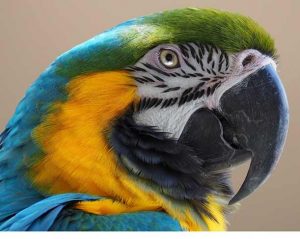 With people, communication is a vast array of typical facial manipulations. We employ raised or downturned eyebrows, variably curved smiles, frowns, and other signs of emotional reaction. There’s also a variety of hand gestures, feigned body movements, and unquestionable intents with raised fists and outstretched arms reaching for hugs. Needless to say, the range of human communications extends far beyond that of normal speech. It’s easy to convey feelings with a simple twist of certain facial muscles to acquire a unique but well-understood look.
With people, communication is a vast array of typical facial manipulations. We employ raised or downturned eyebrows, variably curved smiles, frowns, and other signs of emotional reaction. There’s also a variety of hand gestures, feigned body movements, and unquestionable intents with raised fists and outstretched arms reaching for hugs. Needless to say, the range of human communications extends far beyond that of normal speech. It’s easy to convey feelings with a simple twist of certain facial muscles to acquire a unique but well-understood look.
It should surprise no one that creatures are potentially not much different. We tend to think of humans as the peak of communications with our many, many methods of getting something across. As such, we rarely see birds and other animals move beyond what we’re used to hearing. Squawks and agitated behavior convince us that a bird is up in arms. Soft sounds indicate peaceful behavior. But we’re learning that birds have a range of displays that reveal communication with each other — and us — in ways we’re typically not seeing.
Feather Placement And Skin Coloration As Communication
Recently, researchers at the INRA Centre Val de Loire, a French facility with scientists involved in European agronomic research (soil and plant), worked with ZooParc de Beauval, a 99-acre zoo located in Saint-Aignan, France. (This popular zoo is located about a two and a half hour drive southwest of Paris.) The zoo has a collection of Blue and Yellow Macaws that are used in their free-flight shows. There were recognized facial displays on the parrots as they interacted with their trainers that were deemed interesting thus initiating this study. Obviously, some visual reactionary displays of plumage have been long noticed. But with closer head and face observation on birds that were not mate-seeking or showing signs of fighting superiority or defense, it was discovered that these parrots blushed as a means of communications. With the coloration of the visible parts of the Macaw’s head, it was found that their skin changed from white to red. For this initial study, five Macaws were closely watched in daily routine activity.
As the parrot bonds well with their human companions and trainers, it was thought to watch and gauge their emotional displays in the coloration of the skin as well as feather movement during their time with familiar people. Each bird was watched for periods of twenty minutes each with a standard routine as well as a controlled situation, that is, to create a possible response on purpose versus just observing feather placement (ruffled/sleeked) and skin coloration (white/red) reactions during normal interaction with familiar trainers. Often, as long as the mutual interaction was in effect, the birds were more apt to blush with varied feather movements suggesting that these reactions might be a visual indicator of feeling at ease. But when a caretaker was not paying attention, the birds would seek to regain eye contact and other modes of more concentrated interaction, again displaying a visible sign of a bird’s emotion with specific coloration and feather movements.
This shared study is hoping to more fully realize the visible signs of comfort and ease, and discomfort and distress as communicative tools for birds. With such intense knowledge of facial, skin, and head displays, we can better learn to attend properly to our own companion birds. With humans, there is already a vast understanding of every display of facial movement and coloration. For birds, who do not have many of the communicative displays that we produce, but who utilize a complex array of their own displays, the eventual results and understanding of this study will be essential to our better understanding of them. This study is at its infancy and is now expected to become more intensive as we discover more along the way. You can read the in-depth journal report at the PLOS (Public Library of Science) site here.






Yes…very true! I have 3 Macaws…a Military, a Greenwing, and a Harligold…and my Military Macaw seems to ‘flush’ the most. She flushes the most when a woman gets too close to me…and her beautiful green feathers get very ‘fluffed up’ as well…quite an amazing experience for me and my female friends!
Hi my name is Kim,
I have a yellow sided green cheeked Conure. Her name is Emerald and she is 7 months old. she has been very loving to me but very aggressive to everyone else. just today she got aggressive with me and pooped on me for the first time and bite me drawing blood which she never has done before and was starting to be mean yesterday. then she can be super sweet and put her head on my hand to pet her and she cuddles up with me and sleeps,etc. but out of nowhere she will all of the sudden stand up and turn and bite. She has even jumped off me and bit my sister and then came back to me and was sweet and cuddly. Please help. Everyone but my 4yr old daughter call her the devil bird. she lets my daughter hold her, but today she can’t be trusted with her either. Help me Please! I have other parrots and only the rescue one that was female was skittish and unpredictable with everyone. But Emerald is different then her. Please help me.